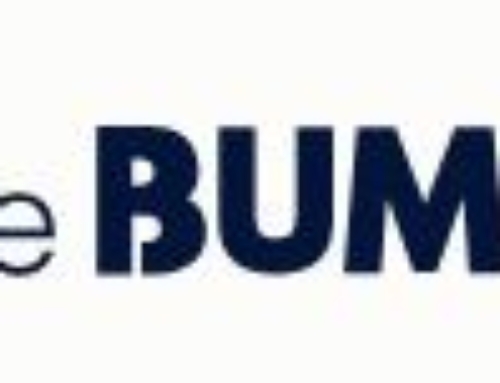The world as we know it has changed— and it changed on February 1-2016 when the World Health Organization declared ZIKA a public health emergency of international proportions. Overnight, it seemed that the emergence of one obscure virus affected the WHERE of travel, the HOW of dress, the GENESIS of human procreation, and ultimately, the DELIVERY of healthcare—particularly as it relates to the perinatal arena.
For those of us on the front line of caring for mothers and babies, every facet of care rendered for patients who MAY or HAVE been exposed to, or infected with ZIKA, is based on what the latest update is—be it from the CDC, OSHA, MMWR, or organizations relating to the oversight of obstetric/pediatric care
A
SO WHAT DO WE KNOW ABOUT ZIKA?
* We know the virus was discovered in the 1940’s, in the ZIKA forest of Entebbe, Uganda; there are two strains of the virus— Asian and African subtypes
* We know it is classified as an Arbovirus—a virus that multiplies IN and is spread BY an insect—in this case a mosquito of the Aedes class. These mosquitos bite during the day and are repelled by bright colored clothing.
* We know the virus can spread via multiple venues besides a mosquito—by blood transfusion contaminated by an infected donor ,sexually by MEN and WOMEN, and prenatally—by an infected pregnant woman to her unborn fetus
* We know that the virus can be found, not only in the blood of an infected person-but also has been found in urine, saliva ,amniotic fluid, semen, and breast milk. The virus also is known to remain in the urogenital system of both sexes for an indeterminate period of time
* We know that in the majority of cases, an infected person is ASYMPTOMATIC. Symptoms—when they do occur—are generally nonspecific; fever, nausea, vomiting, diarrhea, rash, conjunctivitis, and joint pain are frequently noted.
* We know the virus seems to have an affinity for the human central nervous system; in adults causing, rarely, a muscular paralysis ( Guillian Barre Syndrome); in developing fetuses, disrupting normal development, primarily of the brain—but also the limbs and eyes
* We know testing for ZIKA is NOT timely, in convoluted, and is fraught with cross reactivity with other viruses like Dengue, and Chikungunya; recently, testing has moved from being performed exclusively by the CDC/local health departments—now a small cadre of private lab facilities offer testing
* We know ZIKA has come to the shores of the United States
* And finally,— we know—at this time— there is no PREVENTION or CURE
B
SO WHAT DONT WE KNOW ABOUT ZIKA?
* How did ZIKA, an initially innocuous virus, travel across Africa and Southeast Asia and land in Brazil, an epicenter—where now it has such devastating effects? Did it mutate?
* How does ZIKA bypass the human immune system?
* Why does it specifically attack the nervous system?
* Are there other vectors besides the mosquito transmitting the disease? Is the Aedes mosquito the only type to transmit the virus?
* How do you prevent sexual transmission?
* Does the immune system of the pregnant woman make her and/or her fetus more susceptible to infection by ZIKA?
* Can having ZIKA infection condemn a patient to forever being at risk for having an affected baby?
C
SO WHERE DO WE GO FROM HERE?
Physicians historically have been the source that patients turn to for guidance, the ones who help maneuver the medical landscape when dealing with an illness. ZIKA has changed this dynamic completely— healthcare providers are now on the same playing field as the patients— awaiting the latest information, looking to the next guideline, learning something daily about how to deal with a patient with a disease, for which, we don’t yet understand or have a cure. It is indeed an uncomfortable position to find yourself in. As a maternal fetal medicine specialist—it is a feeling compounded two-fold, as I have two patients— the mom and her fetus— for which I have no definitive answers as to outcomes- current or future.
As ZIKA continues its spread, it leaves in its wake a host of GLOBAL ramifications:
*Economically— the cost in caring for patients so affected—prenatally through the life cycle. There will need be substantial monies allocated for research as to the WHY’S and HOW’S surrounding the disease, so screening tests, vaccines, and treatments can be developed.
*Environmentally — global warming is real, and as the temperature increases in the more temperate regions of the US — and for that matter, in those endemic areas where ZIKA reigns— the mosquito breeding cycle will likely flourish— and the disease will continue to spread
* Morally— for women carrying affected fetuses, will termination be an option if diagnosed in the advanced stages of pregnancy? What happens to those women who don’t have access to prenatal care?
* Politically— will there be a consensus among politicians globally, recognizing the threat to the populace serviced, and allocate resources to afford a positive public health outcome?
I have no doubt that researches will develop a specific rapid screening test, ultimately produce a vaccine, and uncover a treatment regimen. There is a high likelihood that the screening test may have to be offered as a standard part of prenatal care to all women— just as screening for genetic diseases and gestational diabetes has become the norm.
I have no doubt that physicians once again will be able to offer a solution to a patient diagnosed with ZIKA—particularly the pregnant ones. Pandora’s Box has been opened, and time is of the essence. As Marie Lu state in her novel, Champion— “ Time heals all wounds….but not this one…not yet”
Bibliography
The Link Between the Zika Virus and Climate Change- The Atlantic 2/2016
In Zika Epidemic- A Warning on Climate Change- The NY Times 2/20/16
WHO Director General Summerizes the Outcome of the Emergency Committee Regarding Clusters of Microcephaly and Guillian Barre Syndrome
ZIKA VIRUS/CDC- Centers for Disease Control ( Fact sheets for reproductive age women, pregnant women, travel, healthcare providers, sexual transmission)
MMWR- ZIKA Report
Originally Posted to Huffington Post; July 15, 2016
By Dr. Kecia Gaither






